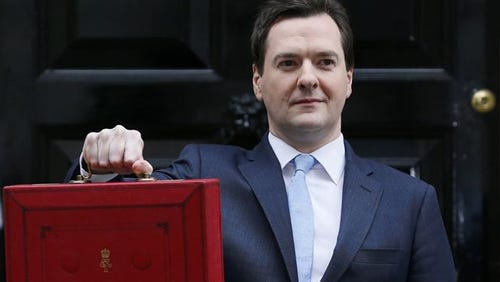Labour's new fiscal rules should lead to mega investment in Britain
The Chancellor's eyeing up changing the financial rules of play for the government. Economist Phil Tomlinson breaks down what it means and how it could boost the country's future.
The Chancellor's eyeing up changing the financial rules of play for the government. Economist Phil Tomlinson breaks down what it means and how it could boost the country's future.
After weeks of speculation, the Chancellor, Rachel Reeves, has finally confirmed there will be changes to the Treasury’s “fiscal rules” in the budget to facilitate new public investment.
The changes to the fiscal rules relate to the way that public debt is calculated. Currently, the fiscal rules use public sector net debt, which measures the total amount of past government borrowing and comes to around £2.5tn. Rachel Reeves’s proposal is to instead use public sector net financial liabilities as the measure of debt. This takes account of both the government’s financial assets (such as the student loan book, and public sector pensions) and liabilities and comes to a lower figure of around £2.4tn. It is estimated by using this lower figure, the government can free up around £50 billion to invest in public infrastructure.
The shift marks a departure from the fiscal conservatism of recent years, which focused heavily on debt reduction at the expense of public investment. Instead, Reeves’ approach suggests a recalibration, where growth and productivity are seen as the best long-term strategy for managing the public finances.
Originally introduced by the then Chancellor Gordon Brown in the late 1990s, the fiscal rules once had a noble aim. They were designed to ensure governments balance their annual budget and that long-term public debt is properly managed, and they prevented governments from increasing public borrowing for short-term political advantage, such as for pre-election tax cuts
Since 2010, the Office for Budget Responsibility (OBR) has been the governments independent fiscal watchdog, set up to make government finances more transparent and help guide fiscal policy in accordance with the rules. First, the government must balance its budget, meaning current spending should be covered by tax revenues.
Second, public debt as a percentage of GDP should decrease by the fifth year of the OBR’s forecast.
The Lead needs your support. Please help us keep our reporting and analysis independent by subscribing - or upgrading to paid to get access to exclusive content, conversations with our writers and editors, and more.
Both are problematic. The first rule is vulnerable to economic downturns: during recessions, the budget deficit and debt-to-GDP ratio naturally rise as tax revenues drop and spending on benefits increases. Even in slow-growing economies like the UK, these deficits can become chronic, especially with an ageing and sickly population, which increase the demand for public services and limit growth.
The second rule—that debt-to-GDP should fall within five years—can also be restrictive. Leading economists argue that this creates a bias against public investment, which is essential for long-term growth. When faced with high deficits and debt, chancellors may cut public investments, which hinders growth. Economist Jonathan Portes notes that this “rule creates perverse incentives without ensuring fiscal sustainability.”
Moreover, the OBR’s debt forecasts are often sensitive to slight changes in interest rates and growth, meaning they can be inaccurate. Since 2010, chancellors have adjusted the fiscal rules seven times to keep up with political and economic changes, leading some economists to argue that they’re simply “marking their own homework”—hardly a solid basis for fiscal policy.
Poor growth and the investment gap
Since the financial crash, UK economic growth has been weak. Much of this stems from our weak productivity, which has been significantly lower than other major G7 economies. In fact, the UK has trailed other major G7 economies on business investment since the mid-1990s, and now ranks 28th of 31 OECD countries, according to a recent report from the Institute for Public Policy Research (IPPR). Since 1990, the UK’s investment gap with the OECD average is estimated to be around £35 billion a year. This means British workers are using outdated equipment and so are less productive.
The UK is in dire need of new public investment, especially in infrastructure, connectivity and to support emerging high-tech industries, such as Artificial Intelligence, cyber and clean energy. Public investment in better health and education is also required to increase the labour supply, and to equip it for the high skilled jobs of the future. Such public investments will attract private sector investment and generate growth.
Yet, to meet the current public debt rule, total public investment over the next five years would have to fall from 2.5 per cent to 1.7 per cent of GDP. In real cash terms, this cut would be more than under the entire Conservative government of 2010-24.
History suggests the way to reduce the Debt/GDP ratio is through economic growth, rather than cutting public investment. This happened in the decades after World War 2, when the UK Debt/GDP ratio had reached a high of 250 per cent. Former Bank of England Chief Economist Andy Haldane recently highlighted OBR analysis on the likely returns of increased public investment – a permanent one per cent increase in public investment to GDP increases GDP by 0.5 per cent after five years and over 2 per cent after 10-15 years.
“Reeves has a chance to drive long-term growth that could finally lift the UK’s productivity, create high-skilled jobs, and address regional inequalities.”
A new approach
Most economists agree that the government needs a credible fiscal framework, ideally with independent oversight from a body like the OBR. The 2022 Truss/Kwarteng budget, which ignored the OBR and unsettled financial markets, left the economy in tatters.
However, current fiscal rules are one-sided. They focus solely on debt without considering the government’s assets or unused economic capacity. The National Institute of Economic and Social Research (NIESR) suggests a different approach: targeting public sector net worth, which accounts for the entire government balance sheet, including assets like roads, hospitals, and schools, minus debt. According to NIESR Director Jagjit S Chadha, this would give a clearer view of the government’s economic management and its impact on GDP, holding ministers more accountable.
While the latest fiscal announcement stops short of adopting this approach, it does address concerns about low public investment. Reeves plans to retain the budget balancing “stability rule” but will modify the way debt is calculated to allow more public investment. Assets like student loans will now be counted, and the measure will be called “public sector net liabilities.” Though the goal remains to reduce the debt-to-GDP ratio over five years, this adjustment could open up around £50 billion for new investment.
There may still be challenges, however, as recent rises in government borrowing costs could limit new investments. This would be unfortunate, as public investment tends to boost long-term growth, ultimately funding itself through higher tax revenues. In the end, fiscal rules should serve as tools for stability, not shackles on growth. By loosening the strict constraints on public debt to make room for vital investment,
Reeves has a chance to drive long-term growth that could finally lift the UK’s productivity, create high-skilled jobs, and address regional inequalities. As we await the Chancellor’s budget, it’s clear that an economy focused solely on managing debt risks missing the broader picture—and a brighter, more prosperous future.
Phil Tomlinson is Professor of Industrial Strategy, and Co-Director of the Centre for Governance, Regulation & Industrial Strategy, in the School of Management at the University of Bath. He holds a PhD and an MSc in Economics from the University of Warwick.
The Lead is now on Substack.
Become a Member, and get our most groundbreaking content first. Become a Founder, and join the newsroom’s internal conversation - meet the writers, the editors and more.





